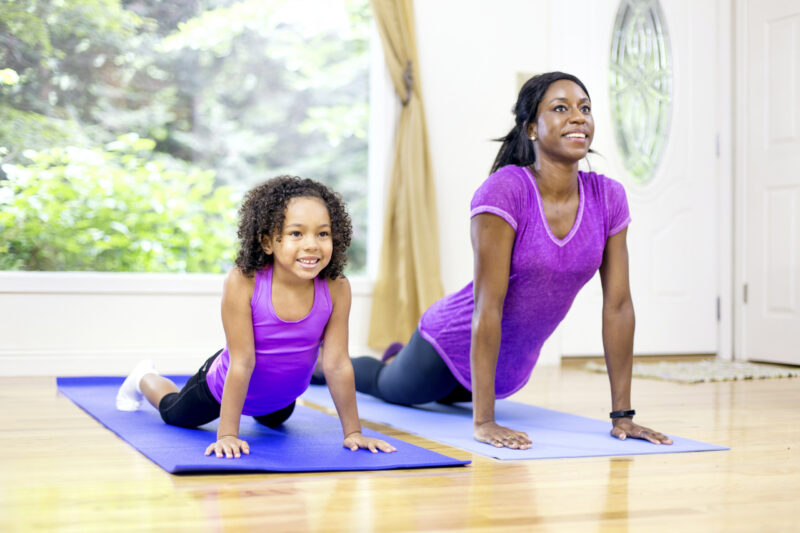For many families, summertime is period when children are at home more, and parents may be looking for additional ways to keep their children active. There are many activities you can do to get moving as a family, such as outdoor play and experiences, or find ways to be active safely inside.
Family Fun
Outdoor activities like going for a walk, playing at the park, swimming, and participating in sports are ways you be active with your children. The chart below contains a few activities that you can do outside as a family. These activities target aerobic exercise and muscle- and bone-strengthening exercises (U.S. Department of Health and Human Services, 2018). As you participate in any outdoor activity, you should monitor the level of impact and adjust the intensity of the activity to match your child’s developmental age and ability.
| Outdoor Family Activities | |
|---|---|
|
Aerobic – moving large muscle groups that increase a person’s heart rate |
|
|
Muscle-strengthening |
|
|
Bone-strengthening |
|
Beat the Heat
While the options for outdoor experiences above are great suggestions, what if you live in an area where the weather is particularly hot, and exercising outside could be difficult or even hazardous? Be inside! There are many ways to exercise and be active with your family inside too. Try some of the activities listed in the chart below to help your family get moving
| Indoor Family Activities | |
|---|---|
|
Aerobic – moving large muscle groups that increase a person’s heart rate |
|
|
Muscle-strengthening |
|
|
Bone-strengthening |
|
Benefits of Being Active
Being active is beneficial for everyone regardless of their age. Some of the many benefits of participating in physical activity for children and adults are listed below (Centers for Disease Control and Prevention, 2021, 2022)
| Benefits of Being Physically Active | |
|---|---|
| Children |
|
| Adults |
|
Physical Activity Guidelines for Americans, 2nd edition
The U.S. Department of Health and Human Services has released the Physical Activity Guidelines for Americans, 2nd ed., and these recommendations cover different types of activities for individuals who do not have disabilities and for those who do have physical challenges. (U.S. Department of Health and Human Services, 2018, p. 53). Click on the link below in the Additional Resources block to navigate to this resource, discover additional ways to be active, and learn about the benefits of physical activity.
Engaging in appropriate amounts of daily physical activity can be achievable for the entire family. Whether you’re active outside or inside, there are many ways for everyone to be involved and reap the benefits of being active together. Click on the link for Thrive’s parent resource Moving to THRIVE in the Additional Resources block below to find a list of activities that can be done indoors or outdoors, with multiple age groups, and in large or small spaces (e.g., apartments).
References
Centers for Disease Control and Prevention. (November, 2021). Health benefits of physical activity for adults. https://www.cdc.gov/physicalactivity/basics/adults/health-benefits-of-physical-activity-for-adults.html
Centers for Disease Control and Prevention. (January, 2022). Health benefits of physical activity for children. https://www.cdc.gov/physicalactivity/basics/adults/health-benefits-of-physical-activity-for-children.html
Centers for Disease Control and Prevention. (June, 2022). Aerobic, muscle- and bone-strengthening: What counts for school-aged children and adolescents? https://www.cdc.gov/physicalactivity/basics/children/what_counts.htm
U.S. Department of Health and Human Services. (2018). Physical activity guidelines for Americans, 2nd edition. https://health.gov/sites/default/files/2019-09/Physical_Activity_Guidelines_2nd_edition.pdf

